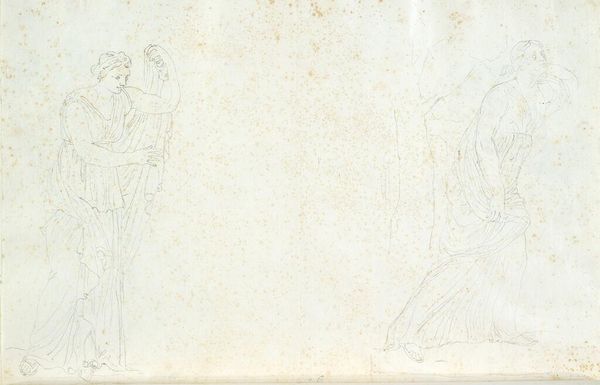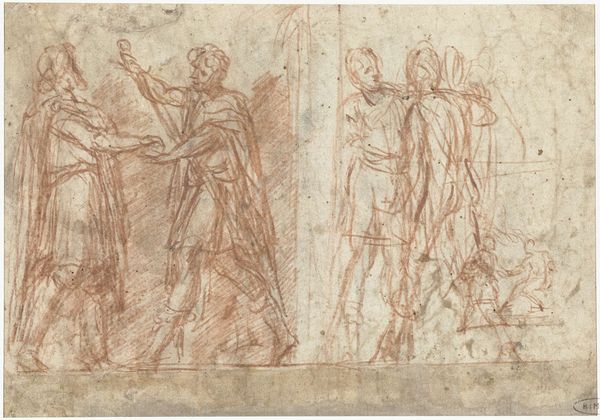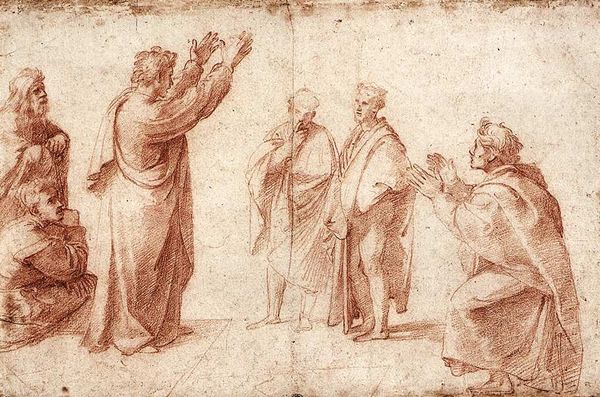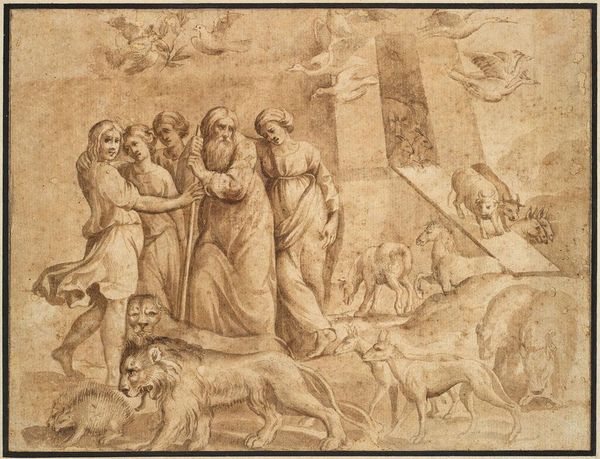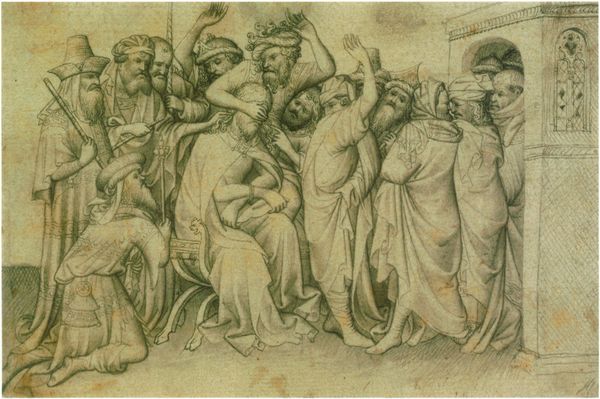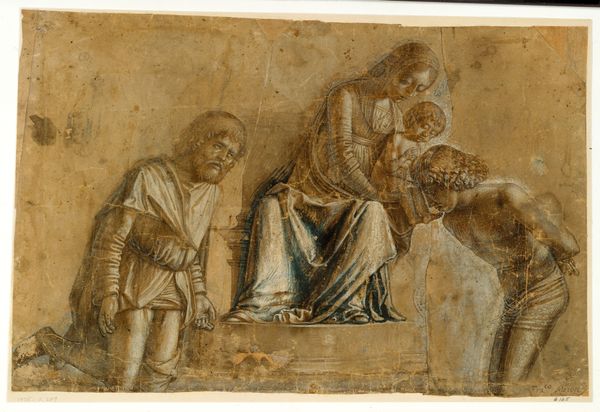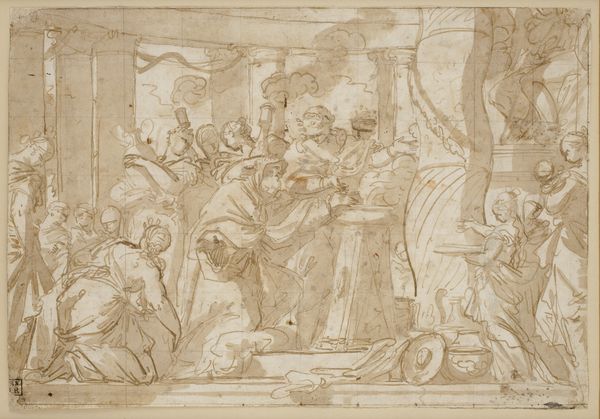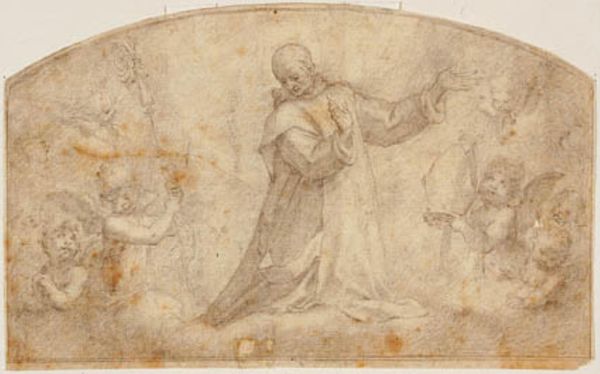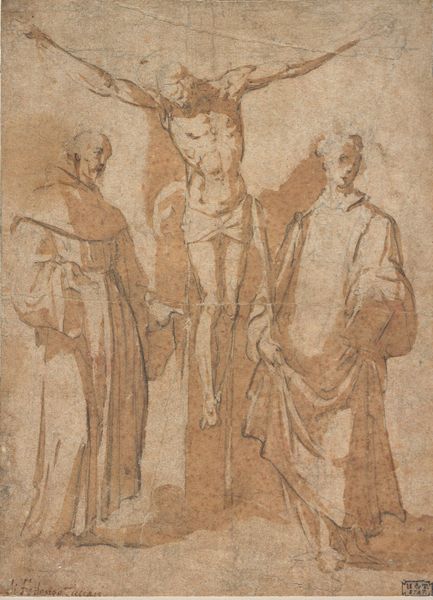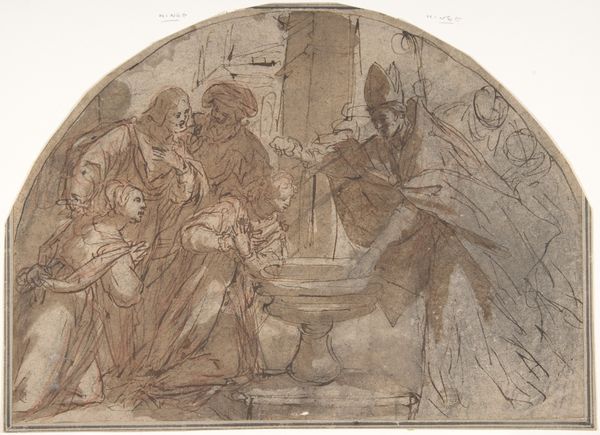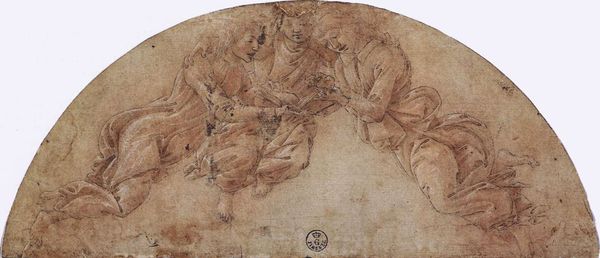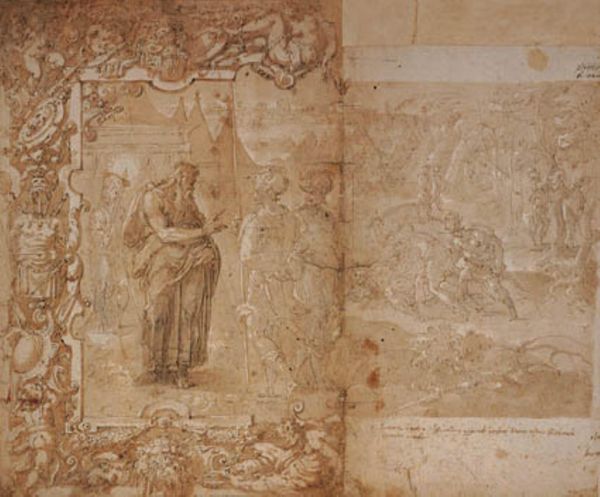
drawing, paper, ink
#
portrait
#
drawing
#
narrative-art
#
sculpture
#
charcoal drawing
#
figuration
#
paper
#
oil painting
#
ink
#
christianity
#
history-painting
#
italian-renaissance
#
early-renaissance
#
miniature
#
watercolor
Copyright: Public domain
Curator: This miniature, held at the Louvre in Paris, presents Fra Angelico's “Institution of the Eucharist,” completed around 1446. It’s an ink and charcoal drawing on paper, embodying the early Italian Renaissance style. Editor: Immediately, I notice a certain tenderness in the scene. The muted earth tones feel humble, devotional even. And the bare paper shows through—it’s as if we are peeking behind the curtain of a grander narrative, glimpsing a moment of profound intimacy. Curator: That sense of intimacy is palpable, especially when we consider the historical and social context. The act of kneeling before Christ underscores themes of humility and service central to Christian doctrine. The arrangement promotes hierarchical power dynamics. Editor: Hierarchy indeed, yet with the artist's touch, the drawing has become this almost... wistful portrayal. It feels so simple, even the unfinished quality of the lines conveys honesty. There is almost the sense that these subjects are being seen as human and humble first, and deities second. Curator: Precisely. The figuration—the human form depicted so realistically—is characteristic of Renaissance art, placing humanity at the centre of its gaze. We're no longer in the purely symbolic realm of medieval art, although the religious context is ever-present, especially in Early Renaissance iconography. The use of a relatively simple drawing allows for that tenderness, but simultaneously engages with traditional notions of art's place and position in discussions of power. Editor: Yes, and that placement – that consideration. You see it reflected in every line, the quiet reverence of those kneeling. Almost like capturing a whispered prayer rather than a shout to the heavens. Even Christ is seen reaching, bestowing... rather than towering or dominating. Curator: So it’s not simply a historical piece, but an intimate narrative playing out universal questions regarding faith, power and how it relates to lived realities, even centuries later. I wonder, what resonances do viewers feel between such an event and contemporary existence? Editor: I’m left thinking that even within formal constraints of power or divinity, something human inevitably seeps through, finding unexpected avenues to emerge. I mean, look at this scene; its raw vulnerability still echoes powerfully through all of time and circumstance.
Comments
No comments
Be the first to comment and join the conversation on the ultimate creative platform.
